29 January 2024
![]() 6 mins Read
6 mins Read
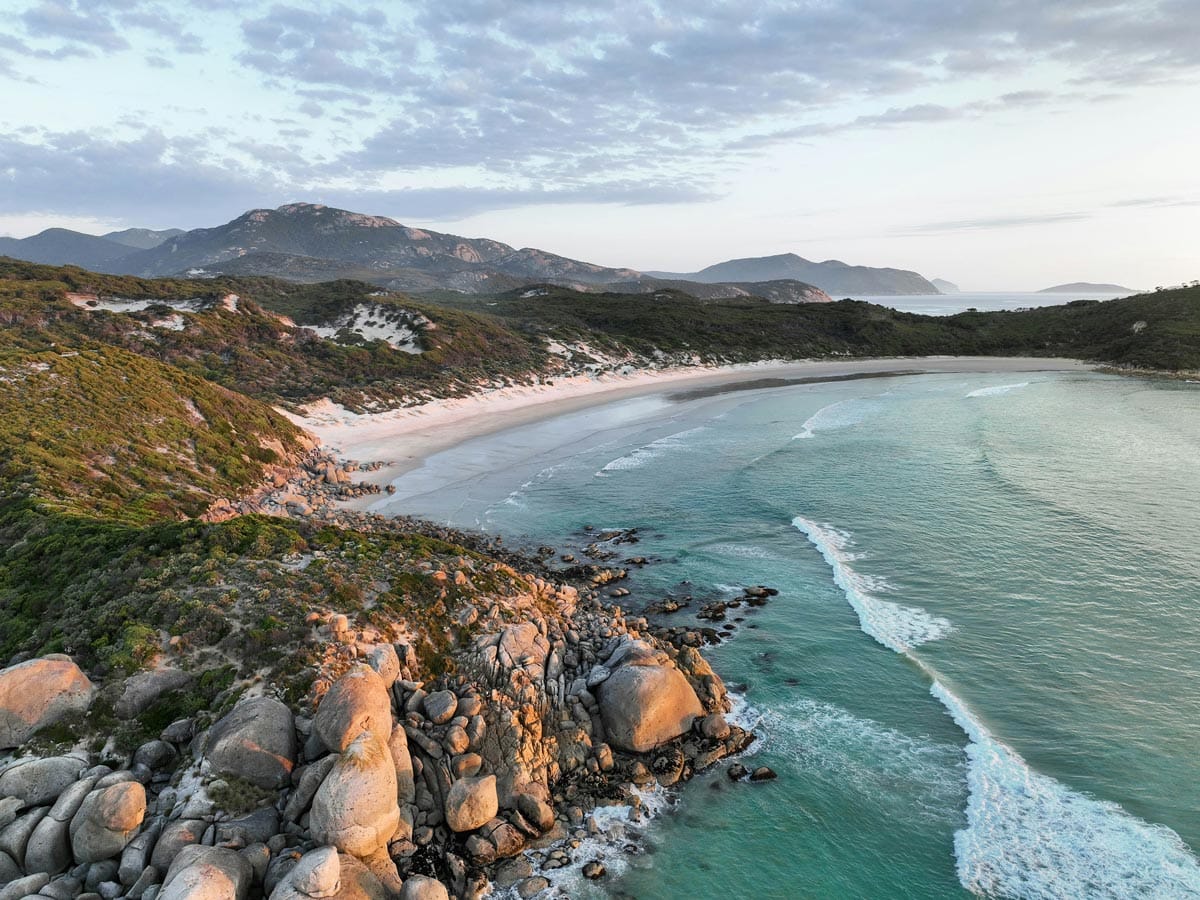
Australian beaches are among the best in the world. Who am I kidding, they are the best in the world. And with over 10,000 gracing our coastline, there are plenty of beach opps to be had.
Travel guidebook publisher Lonely Planet’s latest release, Best Beaches: 100 of the World’s Most Incredible Beaches, reveals a collection of the world’s most breathtaking coastal gems and Australia has dominated the list, with nine spectacular beaches making the cut.
Being the most famous beach in the world, Bondi Beach in NSW takes its well-deserved spot in this book. Not only did it make the 100 best beaches list, but it also reigns supreme in two separate categories (the only beach to do so). Named the ‘best beach to people watch’ and the ‘best beach worth the crowds’, Bondi is a Sydney cultural icon.
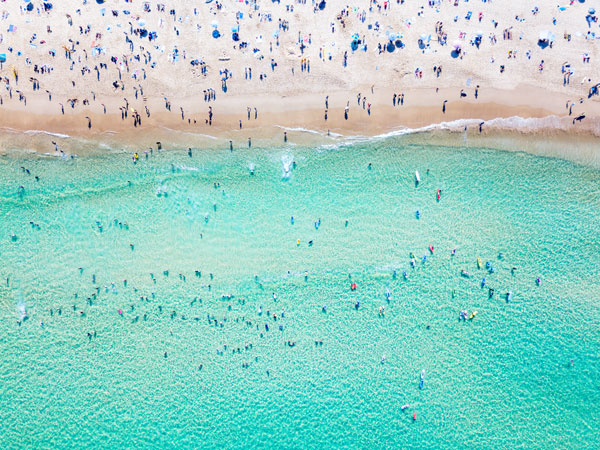
Join the crowds at Bondi Beach.
Travellers from all over the world flock to Sydney’s Bondi Beach for their moment in the sun, but if you’ve watched Bondi Rescue you’ll know the surf can be a bit rough at times. If the open ocean isn’t for you, the iconic Bondi Icebergs ocean pool is an institution in and of itself, so head there instead and finish off with lunch at the renowned Icebergs Dining Room and Bar.
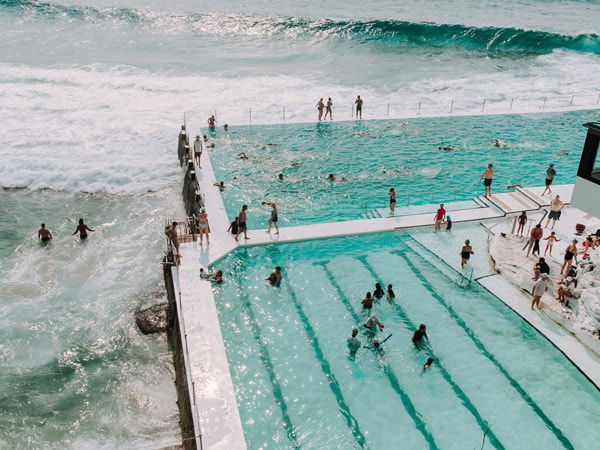
Dip in the iconic Bondi Icebergs ocean pool. (Image: Nate Johnston)
This protected bay near Esperance in Western Australia’s Cape Le Grand National Park is identifiable by its bone-white sand, breathtakingly blue water and the cheeky kangaroos who while away their days on the shoreline.
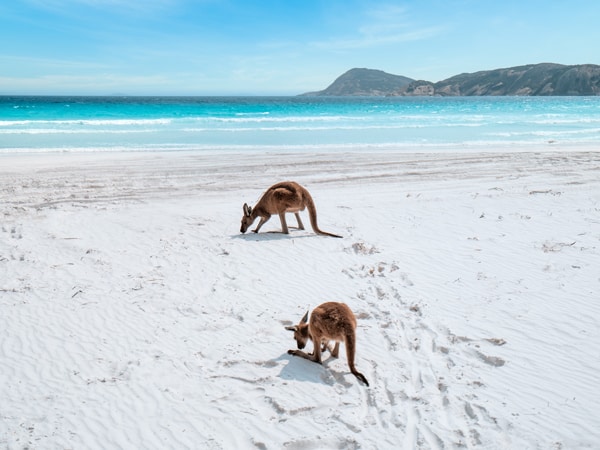
Spot kangaroos frolicking on the powdery white sand of Lucky Bay. (Image: Tourism Western Australia)
Rightfully named by Lonely Planet as the ‘best beach to see wildlife’, Lucky Bay is also one of our favourite secret beaches in Australia.

Lucky Bay is nothing short of spectacular. (Image: Tourism Western Australia)
Taking the honours for the ‘best beach to see nature’, Queensland’s Tangalooma Beach is best known for the rusty, hulking shipwrecks jutting out from the shore.
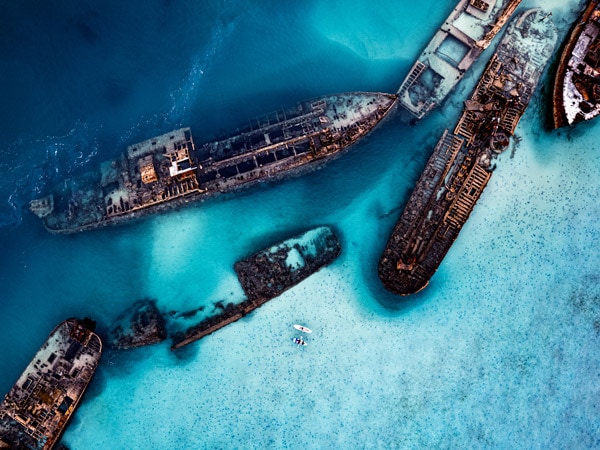
Go snorkelling around the Tangalooma Wrecks. (Image: Ben Hudson; Visit Brisbane)
Located on Moreton Island/Mulgumpin off the coast of Brisbane, a day at Tangalooma Beach will likely see you becoming acquainted with dolphins, turtles, rays and elusive dugongs. The Tangalooma Wrecks are perfect for snorkelling and scuba diving with coral and fish now calling the wrecks home.
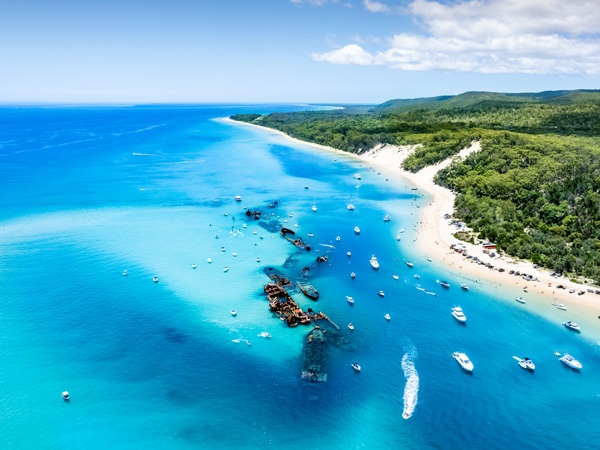
A day at Tangalooma Beach will likely see you becoming acquainted with marine life. (Image: Ben Hudson; Visit Brisbane)
One of WA’s best beaches, Cable Beach/Walmanyjun stuns with its pristine sand, turquoise water and contrasting red pindan Kimberley soil. Coming in fifth for Lonely Planet’s ‘best beaches to watch the sunset’, the 22-kilometre Cable Beach in Broome is famous for its camel rides, ideally as the sun sets over the horizon creating whirls of oranges, pinks and purples that will leave you breathless.
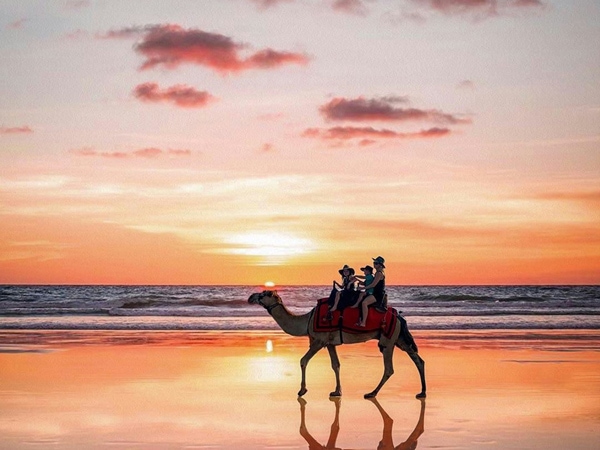
The iconic sunset camel ride on Cable Beach is unmissable. (Image: Nick Dunn)
The dry season (May to October) is the best time of the year to visit Broome’s beaches, with Irukandji jellyfish, crocodiles and sharks rearing their heads from November to April.
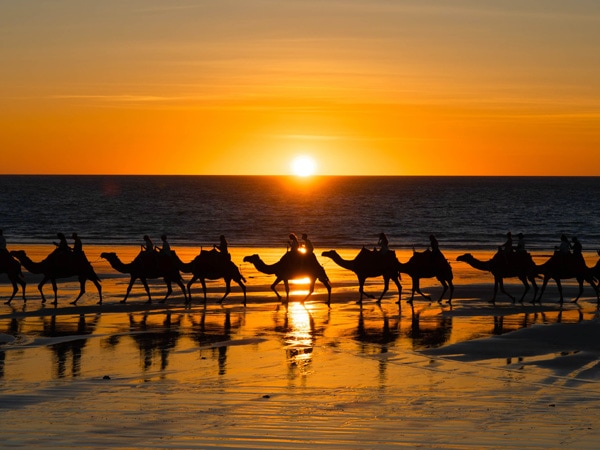
Sunset and camels make the perfect backdrop on Cable Beach. (Image: Christian Taylhardat)
Byron Bay/Gabbanbah on the NSW North Coast is one of the most popular coastal towns in Australia. One of its many beaches, The Pass, is a surfer’s paradise and was named Lonely Planet’s fifth ‘best family-friendly beach’ in the world.
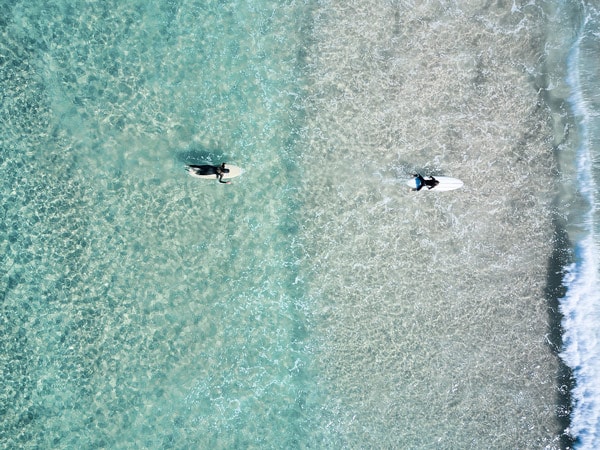
Surfers head to The Pass for its good surf. (Image: Destination NSW)
The Pass has a rich Aboriginal history, from the region’s largest midden (a pile of shells and bones) to the culturally significant native wildlife – from koalas to brush turkeys – that can be spotted in the subtropical rainforest fringing its shores.
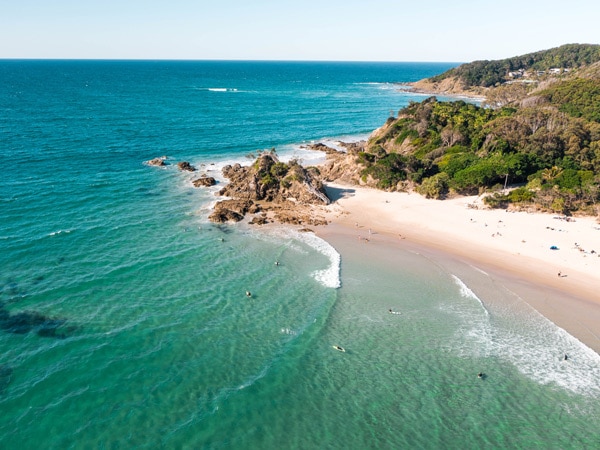
The Pass is one of the picturesque beaches in Byron Bay.
Synonymous with surfing, it’d be a crime not to include Bells Beach on Victoria’s Great Ocean Road in the world’s best beaches list. Framed by red-clay cliffs, a day at Bells will, more often than not, see you rub shoulders with a pro surfer or two.
Home to the longest-running event in competitive surfing, the Rip Curl Pro Bells Beach, it’s a stop on the World Surf League Championship Tour.

Hit the waves at Bells Beach. (Image: Jamie Davies)
Sitting pretty in Freycinet National Park in the island state of Tasmania, Wineglass Bay is a perfect arc of powder-white sand framed by raw wilderness. Located roughly two-and-a-half hours from both Launceston and Hobart, it’s the perfect stop on a Tasmanian road trip.
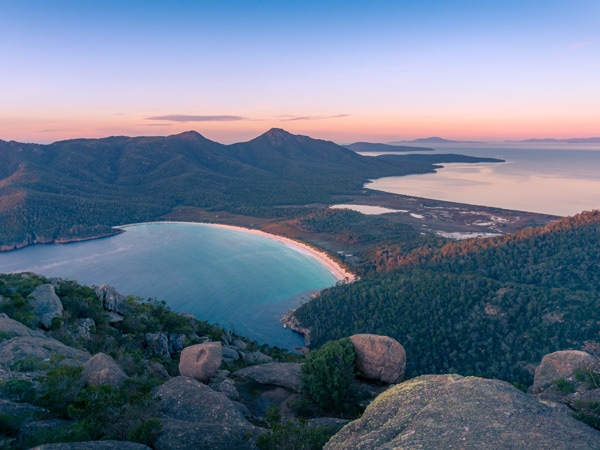
Wineglass Bay is nestled within lush greenery and serene wilderness.
While today the protected bay is a delightful turquoise colour, its name derives from a rather grim whaling past in the 1800s that turned the water a sickening scarlet shade.
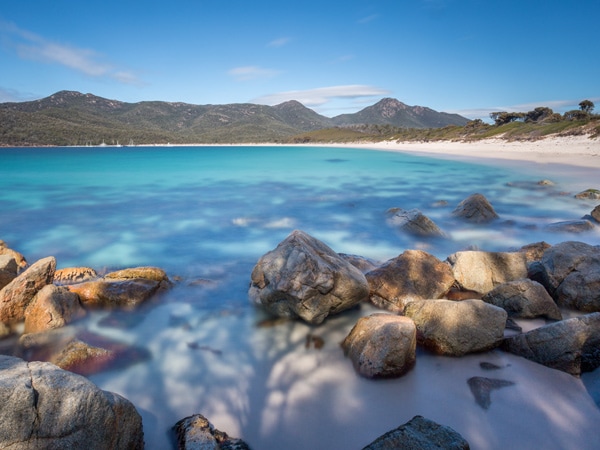
Escape to the rugged and secluded Wineglass Bay.
Squeaky Beach is situated in Victoria’s Wilsons Promontory National Park, the southernmost point of mainland Australia. Enormous granite boulders enclose the beach and fine, rounded grains of quartz sand compress under your feet, creating a high-pitched squeak – hence the name.

Squeaky Beach is bordered by gigantic rocks.
A three-hour drive from Melbourne in Gippsland, it’s well worth it to stay for sunset on Squeaky Beach, with wombats, kangaroos and emus all emerging to enjoy golden hour, too.
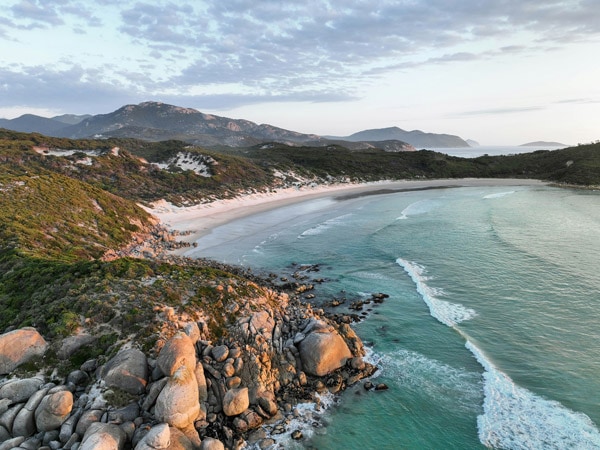
Head to Squeaky Beach within Wilsons Promontory National Park. (Image: Zac Porter)
We’ve all seen the aerial shots of Hill Inlet’s swirling hues of blue and white. Found at the northern end of Whitehaven Beach in the Whitsundays, it’s a sight to behold.
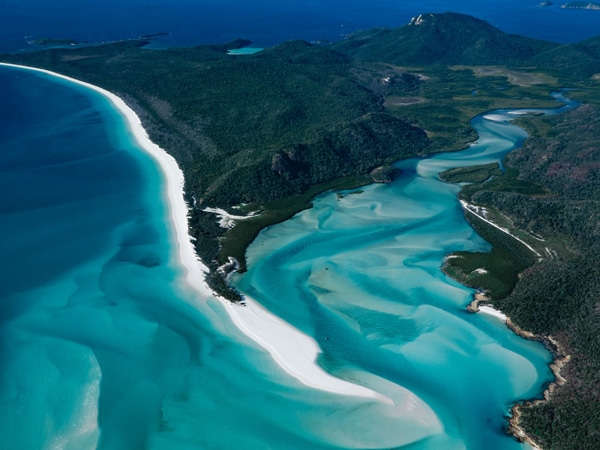
Known for its magical swirling sands, Whitehaven Beach is truly breathtaking. (Image: Lochlainn Riordan)
Day trip to Whitehaven Beach from Hamilton Island – it’ll only take you 30 minutes – and spend some quality time swimming in the refreshing water, exfoliating with the ultra-fine, 98 per cent pure silica sand and leisurely strolling the 1.3-kilometre return bushwalk to look out over the inlet. Day trips will also often include snorkelling the Great Barrier Reef.
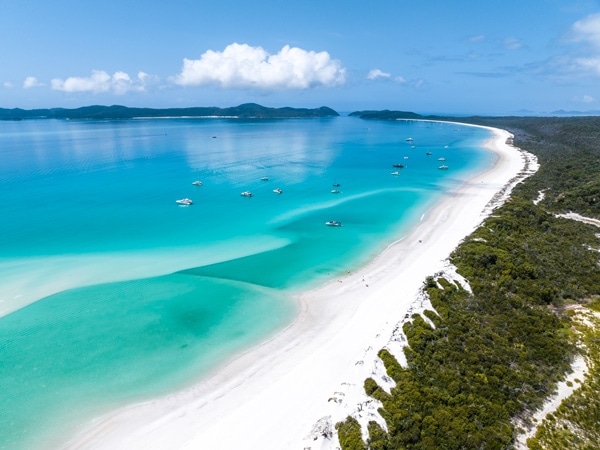
Take a stroll along the ultra-fine white sand of Whitehaven Beach.
LEAVE YOUR COMMENT